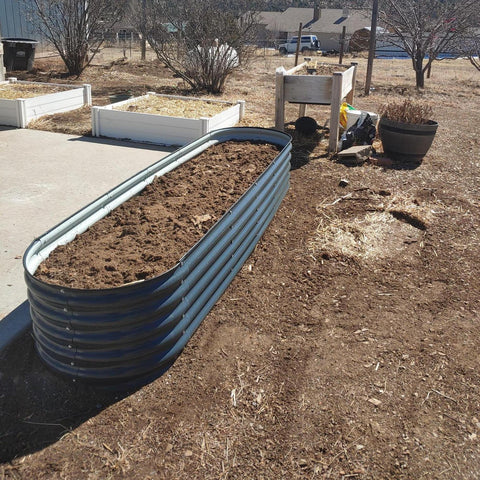Tips from Olle Garden beds: Seasonal Strategies for Raised Beds
Gardening in raised beds is a delightful and productive way to grow your own food and beautify your outdoor space. Whether you're a seasoned gardener or just getting started, the concept of year-round gardening in raised beds opens up a world of possibilities. By strategically planning your garden and adapting to the changing seasons, you can enjoy fresh produce and a flourishing garden all year long. In this article, we'll explore the joys of year-round gardening in raised beds and provide you with seasonal strategies to make the most of your gardening journey.
Spring: A Burst of Life
As the cold grip of winter begins to loosen, spring heralds the start of the gardening season. This is the time to prepare your raised beds for planting. Here are some spring strategies to get you started:
Soil Preparation: Begin by enriching your soil with compost or well-rotted manure to provide essential nutrients to your plants. Raised beds often drain well, so ensure the soil stays moist by mulching.
Early Planting: Plant cold-hardy vegetables like lettuce, spinach, peas, and radishes as soon as the soil is workable. These crops thrive in cooler temperatures.
Protection: Spring can bring unpredictable weather, so be prepared to cover your crops with row covers or cloches if frost threatens.
Summer: Abundant Growth
In the garden, the summer is a time of abundance. Your raised beds should be teeming with life, and you'll have plenty of fresh produce to enjoy. Here are some tips for maximizing the summer:
Companion Planting: Utilize companion planting techniques to deter pests and maximize yield. For instance, plant marigolds alongside your vegetables to repel nematodes.
Mulch: Apply mulch to conserve moisture and suppress weeds. This is especially crucial during hot summer months when water can evaporate quickly.
Regular Watering: Raised beds may need more frequent watering in the summer. Water deeply in the morning to prevent soil from drying out.

Fall: The Harvest Continues
As summer gives way to fall, you can extend your gardening season by a few more months. Fall gardening can be especially rewarding, and raised beds are well-suited for this season:
Succession Planting: Remove spent summer crops and replant with cool-season vegetables like broccoli, carrots, and kale. These will flourish in the autumn's cooler temperatures.
Cover Crops: Sow cover crops like clover or winter rye to protect your soil over the winter and improve its fertility.
Cold Frames: Consider installing cold frames to protect your late-season crops from frost. These mini greenhouses can extend your harvest well into winter.
Winter: Planning and Reflection
Winter is a time for reflection and planning. While your raised beds may appear dormant, you can still tend to your garden during the colder months:
Garden Cleanup: Remove any dead plants or debris from your raised beds to prevent disease and pests from overwintering.
Garden Planning: Use this downtime to plan next year's garden. Rotate crops to prevent soil depletion, and choose new varieties to try.
Indoor Gardening: If you have the space, experiment with indoor gardening by growing herbs or microgreens on sunny windowsills.

Year-round gardening in raised beds is a source of endless joy and satisfaction. By embracing the changing seasons and implementing these seasonal strategies, you can ensure a bountiful garden throughout the year. Whether you're sowing seeds in the spring, harvesting fresh vegetables in the summer, or tending to cold-hardy crops in the fall and winter, your raised beds will provide you with the pleasure of nurturing life and reaping its rewards. So, roll up your sleeves and get ready for a year-round gardening adventure that will bring you closer to nature and the joy of homegrown produce.
